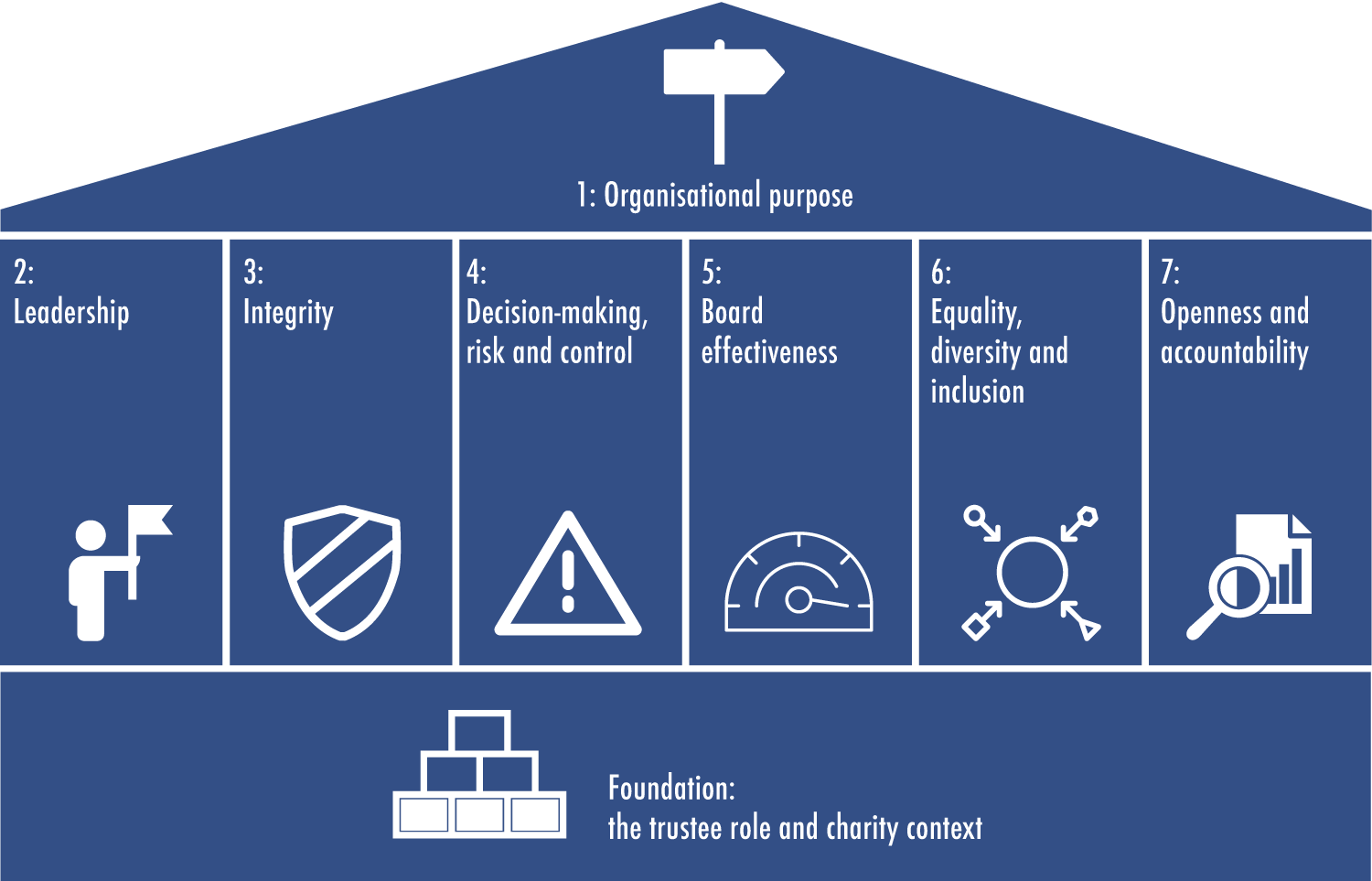Using the Code
Who is the Code for?
This Code is intended for use by charities registered in England and Wales. Much of it will also apply to other not-for-profit organisations that deliver a public or community benefit and those with a social purpose. Organisations or subsectors may find it helpful to adapt the Code to reflect their context.
The Code’s principles, rationale and outcomes are universal and apply equally to all charities, whatever their size or activities.
The recommended good practice to meet these principles will vary. Although it’s hard to be precise about the distinction between larger or more complex charities, governance practice can look significantly different depending upon a charity’s size, income, activities or complexity. We have produced different versions of the recommended practice to reflect and address some of these differences.
Which version you choose to use will depend on a range of factors. In general, we recommend that charities with a typical income of over £1m a year, and whose accounts are externally audited, use the larger version and charities below this threshold use the smaller version.
How it works
This Code is designed as a tool to support continuous improvement. Charity boards that are using this Code effectively will regularly revisit and reflect on the Code’s principles.
Compliance with the law is an integral part of good governance. This Code does not attempt to set out all the legal requirements that apply to charities and charity trustees, but it is based on a foundation of trustees’ basic legal and regulatory responsibilities. The seven Code principles build on the assumption that charities are already meeting this foundation.
The Code sets out principles and recommended practice. See the Code’s useful resources and links section on the Code’s website for more detailed guidance on how to meet the Code.
Each principle in the Code has a brief description, a rationale (the reasons why it is important), key outcomes (what you would expect to see if the principle were adopted) and recommended practice (what a charity might do to implement the principle).
Apply or explain
We anticipate that how a charity uses the Code is something which will develop and mature, particularly where the charity is growing and changing. Given this, some of the recommended practice may not be appropriate for a particular charity to follow initially, but it may become so in the future.
It’s important that trustees discuss the Code’s principles and recommended practice and make well-considered decisions about how these should be applied in their charity.
A charity should explain the approach it takes to applying the Code, so it is transparent to anyone interested in its work. We call this approach ‘apply or explain’. All trustees are encouraged to meet the principles and outcomes of the Code by either applying the recommended practice or explaining what they have done instead or why they have not applied it. We have not used the phrase ‘comply or explain’, which is used by some other governance Codes, because meeting all the recommended practice in this Code is not a regulatory requirement.
Charities that adopt the Code are encouraged to publish a brief statement in their annual report explaining their use of the Code. We anticipate that this statement will be a short narrative rather than a lengthy ‘audit’ of policies and procedures.
Some charities work in areas, such as housing and sport, that have their own sector-specific governance Codes. These Codes may well take precedence over this Code, and such charities are encouraged to say in their annual reports which governance Code they follow.
The principles
There are seven principles which make up this Code. These seven principles build on the assumption that a charity is meeting its legal and regulatory responsibilities as a foundation.

1. Organisational purpose
The board is clear about the charity’s aims and ensures that these are being delivered effectively and sustainably.
2. Leadership
Every charity is led by an effective board that provides strategic leadership in line with the charity’s aims and values.
3. Integrity
The board acts with integrity, adopting values and creating a culture which help achieve the organisation’s charitable purposes. The board is aware of the importance of the public’s confidence and trust in charities, and trustees undertake their duties accordingly.
4. Decision-making, risk and control
The board makes sure that its decision-making processes are informed, rigorous and timely and that effective delegation, control and risk assessment and management systems are set up and monitored.
5. Board effectiveness
The board works as an effective team, using the appropriate balance of skills, experience, backgrounds and knowledge to make informed decisions.
6. Equality, diversity and inclusion
The board’s approach to diversity supports its effectiveness, leadership and decision-making.
7. Openness and accountability
The board leads the organisation in being transparent and accountable. The charity is open in its work, unless there is good reason for it not to be.

